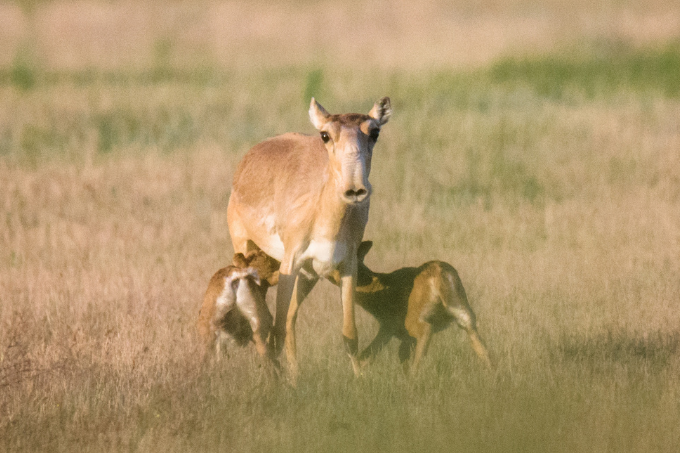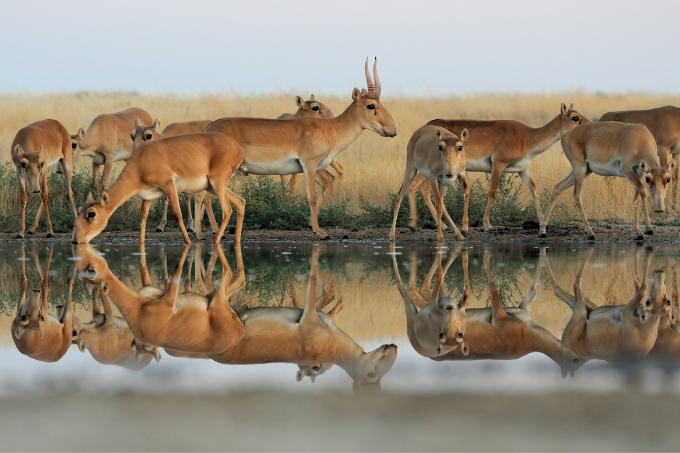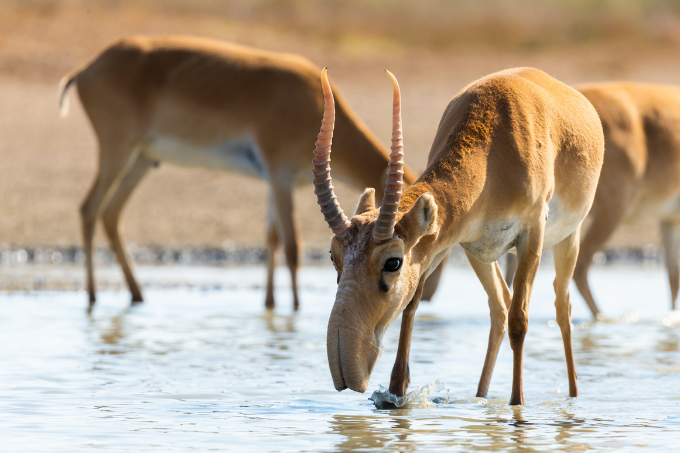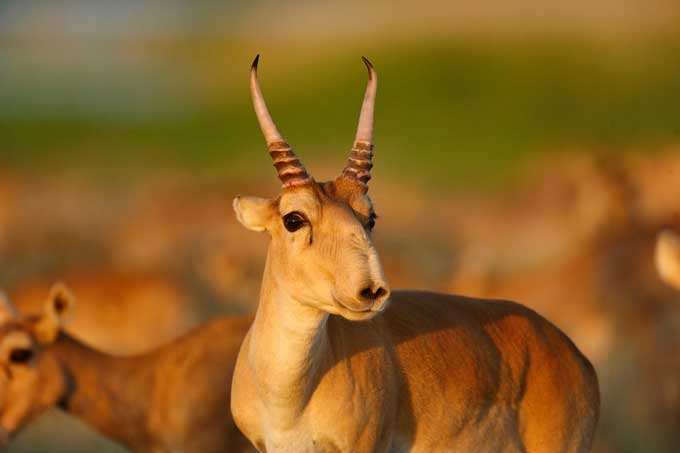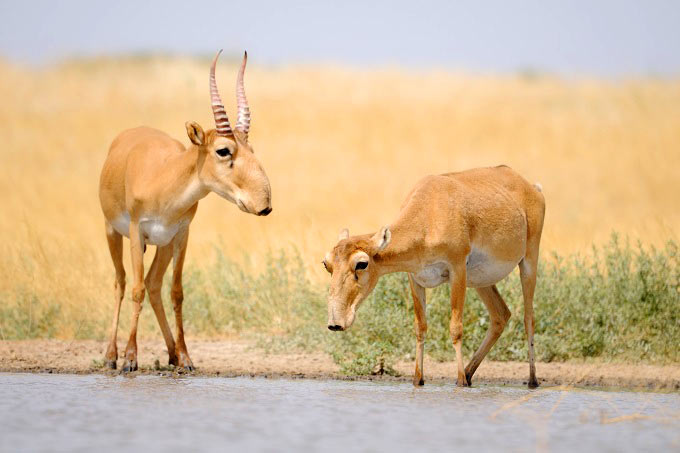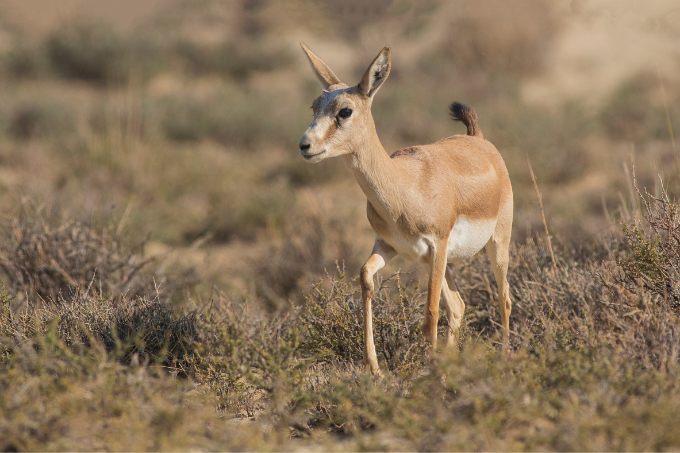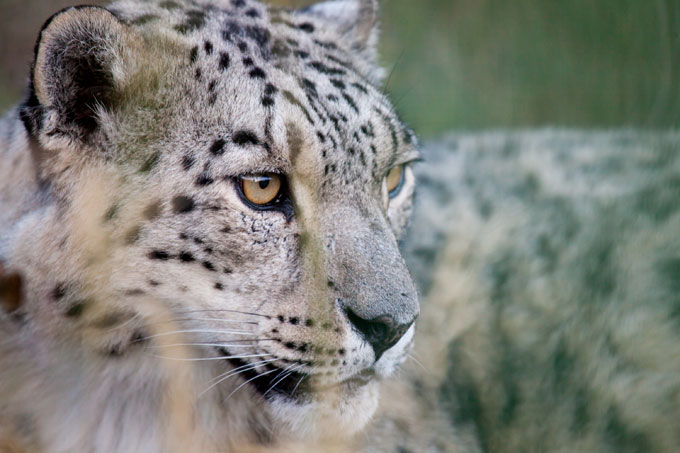A herd of saiga antelopes at a water source - photo: Victor Tyakht/ stock.adobe.com
Species profile: Saiga antelope
An otherworldly ungulate in danger of disappearing
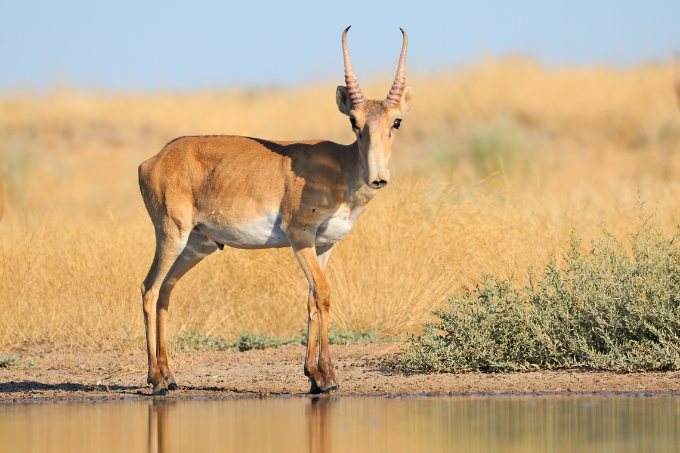
A male saiga antelope at a water source - photo: Victor Tyakht/ stock.adobe.com
Characteristics
The saiga antelope (Saiga tatarica) is distinguished primarily by its prominent, trunklike nose, which reveals itself to be a true multitool. In summer, the nose filters out the desert dust from the environments and cools the air, which can reach ambient temperatures of up to 40 degrees Celsius, to prevent heatstroke. In winter, on the other hand, inhaled air is warmed up in the nose, to protect the lungs and brain from damage through the extremely frigid temperatures.
The animals grow to be up to 79 centimetres tall and reach body weights of 20 to 40 kilogrammes for females and 30 to 50 kilogrammes for their male conspecifics. The males are also equipped with horns, approximately 55 centimetres in length.
Diet and reproduction
Saiga antelopes feed primarily on grasses. When insufficient grasslands are available, they also eat herbs, lichens and shrubbery.
The females reach sexual maturity at seven to eight months old, their male counterparts somewhat later. The mating period transpires in December and calves are born after five months. Normally, saiga antelopes bear twins, but females pregnant for the first time will often only bear one calf. The calves are already highly agile shortly after birth, and are soon able to run.
Habitat and lifestyle
Saiga antelopes reside in the steppes and semi-deserts of Central Asia. The last populations live in Russia, Kazakhstan and Mongolia. They were once also found in Ukraine and China, but have meanwhile become extinct in the wild there. The herds typically spend their summers in the north and the winters in the south of their distribution areas.
They belong to the migratory species and normally congregate in large herds of up to 1,000 animals. The antelopes are primarily active during the day and can cover up to 120 kilometres daily during their migrations. Not only are they good endurance runners, but also fast sprinters, capable of reaching speeds of 80 kilometres per hour. This helps them flee from predators.
Threats
The most significant threat for the saiga antelopes is extensive poaching of their meat and horns, which are used in traditional Chinese medicine. A further problem is the loss of habitat through the conversion of land for agricultural uses and overgrazing by cattle. In recent years, there were also repeated outbreaks of small ruminant plague (PPR), a bacterial infection that has drastically decimated their populations. According to the IUCN Red List, there is a high risk that the species will become extinct in the wild.
RELATED TOPICS
Good news for Central Asia's saiga antelopes! After many years of conservation work by NABU and others on behalf of the species, populations have recovered dramatically. These unique animals are no longer on the brink of extinction. A resounding success story! more →
Saiga antelopes are part of the steppe, just as bison are part of the prairie. Yet this rare animal only survives in five areas in Asia. NABU is helping to preserve the saiga in Kazakhstan with projects for community-based conservation and environmental education. more →
The goitered gazelle inhabits Asian steppes and semi-deserts from the Arabian Peninsula to northern China. The little gazelle was once at home in Kyrgyzstan too, but has become locally extinct. NABU is supporting a project to reintroduce this species. more →
Snow leopards are among the most endangered big cats on earth. Only 4,000 to 6,400 animals now live in the wild. NABU has been committed to the survival of snow leopards in Kyrgyzstan since 1999 and has extended its commitment to Tajikistan, Pakistan and Nepal. more →

